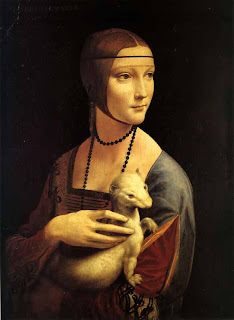 |
| Berliner Dom Museum Island (German: Museumsinsel) is the name of the northern half of an island in the Spree river in the central Mitte district of Berlin, Germany, the site of the old city of Cölln. It is so called for the complex of five internationally significant museums, all part of the Berlin State Museums, that occupy the island's northern part: In my first exploration of this area yesterday, I visited the following:
The Altes Museum (German for Old Museum), is one of several internationally renowned museums on Museum Island in Berlin, Germany. Since restoration work in 1966, it houses the Antikensammlung (antique collection) of the Berlin State Museums.[1] The museum was built between 1823 and 1830 by the architect Karl Friedrich Schinkel in the neoclassical style to house the Prussian royal family's art collection.
Exhibits include the Egyptian and Prehistory and Early History collections, as it did before the war. The artifacts it houses include the iconic bust of the Egyptian queen Nefertiti.[2] Both as a part of the Museum Island complex, and as an individual building, the museum testifies to the neoclassical architecture of museums in the 19th century. With its new industrialized building procedures and its use of iron construction, the museum plays an important role in the history of technology. Since the classical and ornate interiors of the Glyptothek and of the Alte Pinakothek in Munich were destroyed in World War II, the partly destroyed interior of the Neues Museum ranks among the last remaining examples of interior museum layout of this period in Germany. In the post-war period, the ruin of the Neues Museum was left decaying for a long period of time. Other museums of the Museum Island used the least damaged areas of the building for storage. Reconstruction work was started in 1986 by the East German government, but it was halted after the fall of the Berlin Wall and German reunification.[4] In the process historical parts of the building were lost. For instance, the last remnants of the Egyptian courtyard were eliminated. In 1997, planning for the reconstruction project was resumed and English architect David Chipperfield was officially appointed for the project.[4] Sections and fragments of the building were taken out and put in storage. In June 2003 the Federal Government Commissioner for Cultural and Media Affairs Christina Weiss, said on the occasion of the ceremony for the commencement of reconstruction of the museum, that the master plan had "nearly squared the circle: to emphasize the buildings as a historical inheritance, to logically direct the flow of the host of visitors, and to make ready... a modern infrastructure." It exhibits the sculpture collections and late Antique and Byzantine art. I was fortunate to have been able to see the special exhibit "Renaissance Faces: Masterpieces of Italian Portraiture" here. Most memorable was Da Vinci's "Portrait der Cecilia Gallerani". A rich cultural infusion and a great outing to Berlin that I will certainly repeat in the near future. |
An academic trip to see the great buildings and landscapes of the world.







